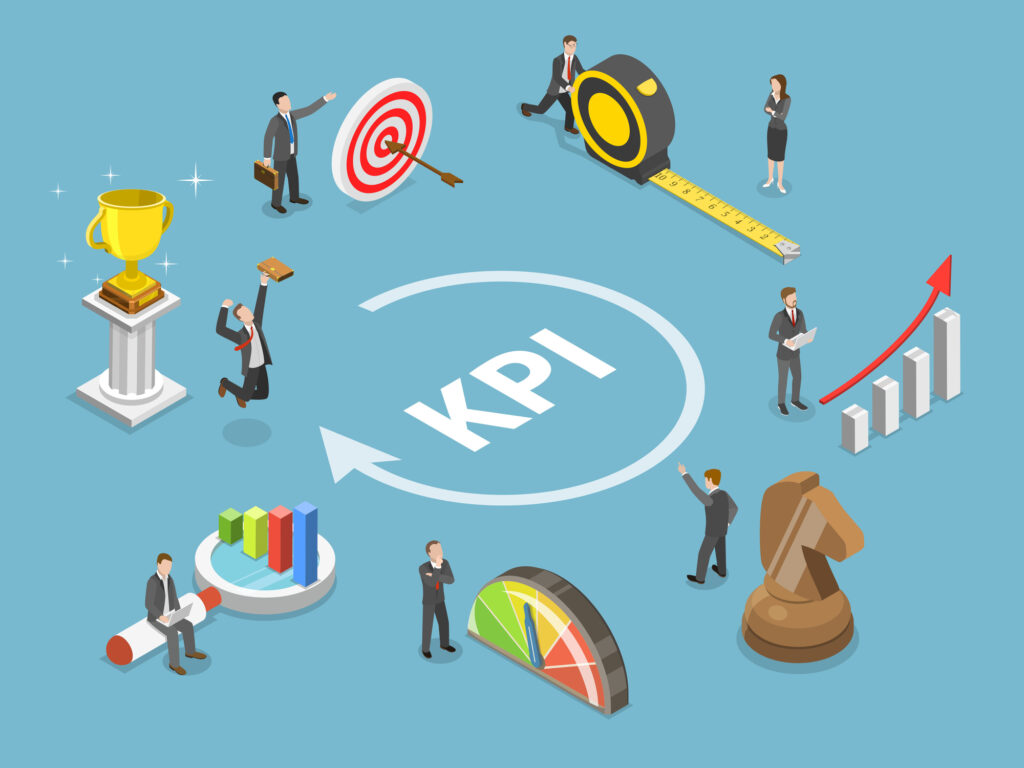A Senior Living Investor’s Views on Occupancy And Sales

Julie Podewitz, CEO and Founder of Grow Your Occupancy, had the opportunity recently to sit down with special guest Rick Shamberg on the Grow Your Occupancy Podcast and hear some of his stories and insights from twenty years in the Senior Living business. Today, Rick is the Managing Director of Scarp Ridge Capital Partners, a […]
Focus on These 3 KPIs to Move the Senior Living Sales Needle

Key Performance Indicators – KPIs. This practice of measuring performance in business has been around in one form or another for a long time. Depending on who you ask, KPIs have been around possibly as far back as the third century A.D. in China! They’ve only become mainstream for most of us in sales in […]
3 Takeaways from 2022 to Reinvigorate Senior Living Sales in 2023

2022 is behind us, whew! For many of us in senior living sales, 2022 marked a symbolic turning of a corner away from the pandemic upheaval of previous years. Our community doors opened again to prospective residents, masks were mostly put away, staff returned to the workplace, and the fears that senior living communities were […]
Don’t Squeeze Out Sales!

Depending on who you ask, the U.S. is either heading into a recession or is already in one. According to a recent poll in The Wall Street Journal, economists think there is a 63% chance of a recession in 2023. If a recession in 2023 really does pan out, what might that mean for senior […]
The Sales Lessons We Can Learn from the Hemline Index

By Melinda Haney As we head out of the pandemic, we head into 2023 nervous about the economy. Cost of doing business is higher than ever, therefore budgets are squeezed. As difficult as it is, now is the time to invest in your sales teams. With the economy weighing heavily on our minds, history can […]
6 Ways to Improve Collaboration Efforts in Your Company

By guest contributor Emma Grace Brown Senior living owners and operators today should be well-versed in the concept of collaboration. Some researchers say that working with people of varying backgrounds and different areas of expertise will generate stronger ideas. When put into action, your employees should feel the effects of collaboration and be comfortable with […]
The 5 Hottest Marketing Ideas for Nursing Homes

By guest contributor Dr. Cameron Zargar, Content Director, Experience Care Digital marketing has not only changed the business world but also the long-term care industry, though the latter has been a bit slower to adjust. “Senior living long-term care tends to lag a bit in its adoption of certain things like technology and marketing automation,” […]
The 5 “P”s of Networking and Prospect Events

As COVID-19 restrictions have eased, in-person networking and prospect events have been added back onto the schedule at senior living communities. And for good reason: well-planned events attract new customers to your community. (If you haven’t added them back to your schedule, now is the time to start.) While virtual events have produced mixed to […]
6 Steps for Successful Marketing Event Planning

Marketing events are a goldmine for attracting both highly motivated prospects and referral sources to your senior living community. If you don’t have an active calendar of marketing events in your sales toolkit, you’re missing out! Planning and executing effective marketing events doesn’t require a small army of event planners and staff. These 6 steps […]
Solving the Occupancy Puzzle – What’s the Problem?

I drive a nine-year-old car. I love my car. It’s incredibly reliable. It’s not fancy, but it gets me where I need to go. I want to drive it forever. It’s always started when I get in. Except for this week. I got into my car. It wouldn’t start. And my heart sank. I don’t […]
6 Tips to Be “Guest-Ready” at All Times for a Prospect Visit

The doorbell rings unexpectedly. You peek out the window and see a familiar car in the driveway. It’s a surprise guest at your front door. The first thing on your mind: the house is a mess! On the way to answer the door, you frantically pick up things left lying around and throw them in […]
The Handwritten Note – And 6 Reasons Why You Should Make Them a Sales Habit

Senior living is a high-touch, emotional business. In our ever-growing digital world, technology is taking on a greater role in sales almost before our eyes, but there is still tremendous value in a truly personal touch. During a recent sales workshop a top sales director was asked to share her tips and tricks. Her response, […]
3 Reasons to Empower Executive Directors to Be Senior Living Community Sales Leaders

Senior living providers who expect and empower their community executive directors to be sales leaders know this is essential for optimum performance. The sales leadership structure of most senior living organizations looks like this: CEO → VP of Sales → Regional Directors of Sales → Community Sales Director The result is often a community sales […]
How to Solve Your Staffing Pain With a Sales Solution

Staffing and sales are worlds apart in business – they couldn’t be any farther apart, right? If you’re thinking that the pain points you’re feeling when trying to fill positions in your senior living company can’t be solved with sales solutions, we’re here to tell you it’s just not the case! Pain Points At first […]
The 3 Pain Points Felt by C-Level Executives in the Senior Living Industry Today

Before the COVID-19 pandemic, if you asked any C-Level executive in the senior living industry, “What has been your biggest pain point during the last 15 years?” the answer almost certainly was: low occupancy. They needed more sales, more move-ins, more revenue, and increased NOI. While this is still a major concern, two others have […]
4 Tips for Leading Sales Teams to Success

Sales leadership in senior living is much more than giving out “rah-rahs” to sales directors for their successes and calling them out with “gotchas” for their mistakes. Sales leadership is about ensuring the company’s sales culture and processes are in place to have a meaningful impact on the overall success of the organization. It’s also […]
The 4 Sales Management Missteps Senior Living Operators Make

Learning from our own missteps is a sign of maturity. Learning from the missteps of others and applying those lessons when working with those you manage is a key trait of a successful manager. In the senior living industry, there are some sales management missteps that are all too common. Here are the top 4, […]
You’ve Got the Leads, Now What?

“We need more leads!” How often have we heard this from our senior living sales directors? How often have we said this ourselves? Saying it is almost a reflex when the question of “why is occupancy down?” comes up. After all, new leads are the top of the sales pipeline for all sales, so more […]
The Sales and Marketing Tool Every Senior Living Operator Must Have

Wouldn’t it be great if your senior living company had a reference source for all things sales and marketing? A single point of truth that everyone in your organization can refer to for guidance on sales and marketing processes, procedures, best practices, expectations, and benchmarks? Do your company – and yourself – the biggest favor […]
The 5½ Senior Living Sales Metrics to Master

Sales people are like Olympic athletes – they train, practice, and are coached to perform at high levels. And like athletes, their performance is measured. Just think about a sprinter that trains to run the 100-meter dash, only they never paid any attention to their time. They have no way of knowing if they are […]
Senior Living Regional Directors – An Underappreciated Resource

The Regional Director of Sales and Marketing is a role that is pivotal to a senior living operator’s success; they can make a tremendous impact on occupancy levels, the health of the community sales teams, and most importantly the revenue of the company. But the challenges senior living Regional Directors of Sales and Marketing face […]
